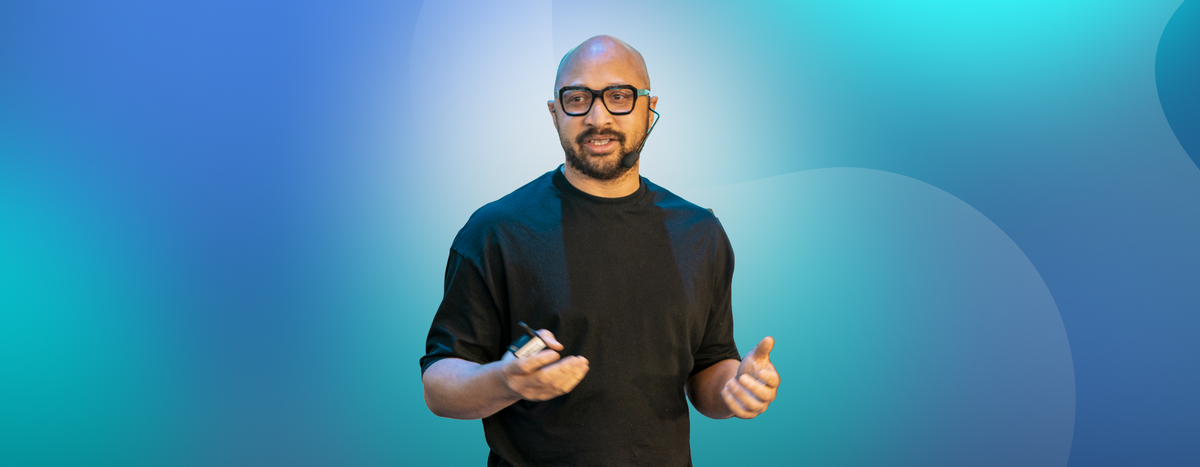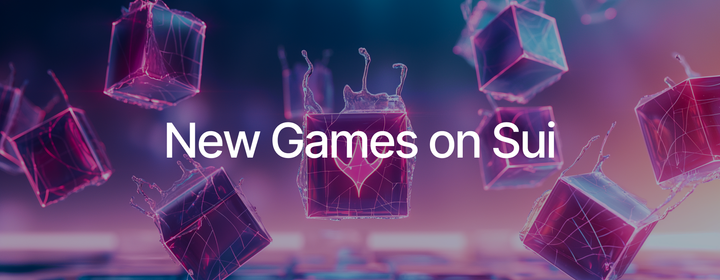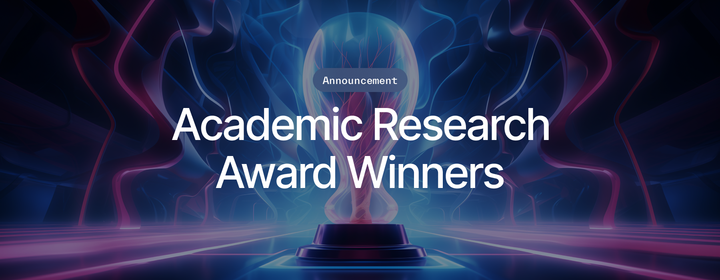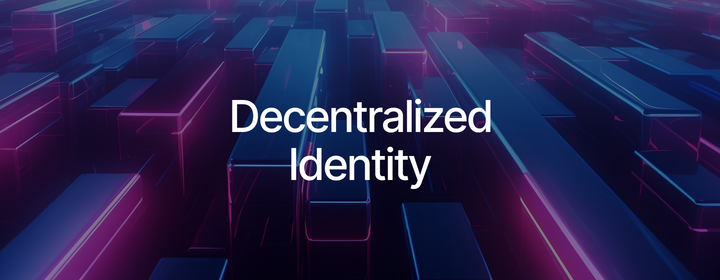Adeniyi Abiodun on the Sui Blockchain's Origins and Progress
Adeniyi discusses Sui's origins, the network's capabilities, his favorite use cases, and the road to Mainnet launch.

Adeniyi Abiodun co-founded Mysten Labs with Evan Cheng, Sam Blackshear, George Danezis, and Kostas Chalkias. He serves as the Chief Product Officer (CPO) for Mysten Labs. He began his career working as a software engineer in London. In 2012 he built his first crypto infrastructure business, eventually taking up leading roles at Oracle, VMWare, and Meta.
I sat down with Adeniyi during the Sui Builder House in Denver to get an inside view of the team, the results of recent Testnet Waves, and his thoughts on Sui's Mainnet launch.
Wayne Cunningham:
Adeniyi, as Chief Product Officer for Mysten Labs, what does your role entail?
Adeniyi Abiodun:
At Mysten, we're helping build the foundation for the decentralized web, and the goal is to enable safe, fast, and cheap access to digital assets for everybody.
Beyond helping the company set this vision, I help the company execute on it and make sure that we are measuring the right things and we're setting the right goals to make meaningful steps to get there. I have a wonderful team across economics, product, marketing, design and engineering. We cut across many verticals, but more than anything, our day-to-day is about rallying the team around what we're trying to achieve and ensuring that what we're building is tailored to the needs of developers who will build on the Sui Platform. Sui is what we believe is the next generation blockchain, that actually brings broadband, as we call it, to web3.
Wayne:
You mentioned measuring the right things. What are those measurements?
Adeniyi:
We really care about developers being able to build on platforms that bring a real benefit to them. One, can they attract the right audience size? Can they build something with a high fidelity of safety and trust?
And that's something decentralization offers. It offers you the ability to build strongly affiliated communities and enables you to employ new monetization strategies. It allows you the ability to build code that is to a large extent on a publicly shared infrastructure, but does that in such a way that is actually highly scalable. We believe builders can amass the largest communities on Sui because it can support the largest user base possible on any layer 1 blockchain.
Wayne:
The origin of Mysten Labs, the programming language Move, and the Sui blockchain come from your days at Meta with Evan, Sam, Kostas, and George. Can you describe what it was like working with them, and how you came from there to here?
Adeniyi:
That was a remarkable experience. We all met at Facebook where we were working on Libra, and the project's goal and mission was to enable everyone to have access to transferable money that, whether they're in a chat message or they're using the internet as usual, is just as easy as sending a message. It should be free and simple to send money.
We weren't able to realize that dream at Facebook, but we believed we had built a remarkable team that was able to get the company most of the way there from a technical perspective. We also felt that the mission hadn't been given the opportunity to succeed. So we felt the best way to achieve that vision was to actually help build a fully decentralized infrastructure rather than building something in-house at Facebook.
It was a great experience working with Sam, George, Kostas, and Evan. They're excellent friends. And I think there's nothing better than to build a company with your friends.
Wayne:
They’ve got some pretty remarkable resumes. Sam invented Move. Kostas is an incredible cryptographer. George is an expert on privacy technologies and distributed systems. Evan has a great vision for the blockchain. Do they complement each other well on these things?
Adeniyi:
We all complement each other. I'm on the product side. I have a strong technical background, but nothing close to the rest of my team. We’ve got Evan, who's an expert and pioneer in compilers, our CEO, and sets a great vision. Evan's actually a great product person, as well. And we have Sam who invented the Move programming language, George, and Kostas, they're all experts in their own rights in different fields. And I think that's what makes Mysten special. We have experts in programming languages, we have experts in cryptography, we have experts in distributed systems, we have built highly functioning teams before. All those things are required to actually solve the problems to help build the most scalable blockchain that ever existed. I do think some teams might not have benefited from such a deep bench. That deep bench is actually what's allowed us to be as successful as we are.
Wayne:
Your focus on product seems to look towards the practicality and the users of this network. How do you create that vision, especially with a network that's still in development at this point?
Adeniyi:
Obsessing about the problem. I think my obsession is really for making things that actually tailor to a user base and our user base is developers. We have an obsession with focusing contributing to the best platform for developers to build. The tools have to be better. The programming experience and the building experience needs to be better. The onboarding needs to be better.
So my job is really being able to turn deeply technical concepts and components into something that can be experienced by both new and experienced developers. And with the wonderful team we have, I believe we're getting there.
Wayne:
Can you give your views on the two Testnet waves and their results?
Adeniyi:
Yeah, both of them were mad dashes to the finish. Everything might look great from the outside, but I can tell you it was a lot of work by the team. And I think one thing that's been very, very clear is our team, when we come around a date and a deadline, we rally around that and we do a really good job. I am biased in saying I think we built the best team in space. It was wonderful because the first wave was really about validators. Can this network operate with independent validators running the software themselves?
And then the second wave was really about tokenomics.
Wayne:
Were there any surprises with the tokenomics as Testnet Wave 2 was running?
Adeniyi:
Our pet peeve about web3 is that gas prices are unpredictable from a consumer perspective. We think you cannot build systems that the average person can use if the fee changes on you on a regular basis. One design element of Sui's tokenomics is that the dollar price for gas should be as flat as possible even in the event of high volatility and high traffic. And we believe this was proven as part of Wave 2.
Wayne:
Is that a very different model than a cloud model where somebody has to add servers to keep up with traffic?
Adeniyi:
Well I would say it's a bit similar. Most blockchains can’t add more resources to the network. They have a fixed amount of capacity. And the best way to ensure that you don't get overrun by traffic is by increasing the price of transactions so that you can basically always charge the highest bidder. And that's a way to control congestion. But we think that's a terrible model. In fact, the cloud doesn't work like that. Google doesn't increase my bill because 50 independent apps just launched. What they do is they throw more servers at the problem. Sui's designed in that same vein, namely as the congestion increases, instead of increasing the price, validators can simply throw more resources to maintain an equilibrium between the supply and demand of resources.
Wayne:
What do you anticipate Mainnet looking like when it launches? Is it going to be a smooth transition from Testnet Wave 3 or are we going to see something tremendously different?
Adeniyi:
We do not want to witness the launch of a blockchain that isn't highly performant, that isn't safe, that doesn't have all the bells and whistles that builders deserve. Mainnet for any blockchain should be feature rich.
I think Sui's Mainnet is going to be rich in the sense of having apps that people can use on day one. Hopefully, they'll be able to do all the things they do on traditional blockchains, but with a twist in the sense that Sui's programming allows for apps that create more engagement than the traditional blockchain.
Sui allows for NFTs that are dynamic in the sense that they will offer a lot more user engagement than just a flat file. Those kinds of user engagements will foster new ways for people to build more interesting communities.
Wayne:
What are your favorite use cases for apps on Sui?
Adeniyi:
Gaming is one of our favorites. Gaming's already well adapted with digital asset ownership now liberating those assets on a public ledger and giving freedom for people to build the composability aspect on Sui. That's very unique in the sense that it's full composability, not what you get on other blockchains. We think that is going to foster a new wave of collaborations that has not been possible before.
Wayne:
With gaming, do you expect to get richer environments, like on consoles? Do you expect to see that type of evolution on the blockchain?
Adeniyi:
Mysten already announced partnerships with some of the leading gaming studios in the world, who are professionals at building AAA titles. We think games have to be fun first, which is why we partner with game builders with tons of experience. We’re excited about the apps that builders plan to launch on Mainnet for specific games.
Wayne:
In the long term, is Mysten Labs going to be focused on helping build the Sui blockchain or are you going to develop your own apps and build user experiences?
Adeniyi:
Our goal will be to continually serve developers. That's what our business is going to be all about. Really enabling Sui to be successful. The Sui Foundation already exists to help enable the Sui blockchain to grow independently of Mysten.
Mysten's job from now on is to continually look at the space and find what are the gaps developers have. How do we want to fund companies who can do a better job at building a better developer experience or build things ourselves where we think there's an opportunity for us to do something that is 10X or 100X better than what's available in the market. It's really about arming developers with better building tools.



